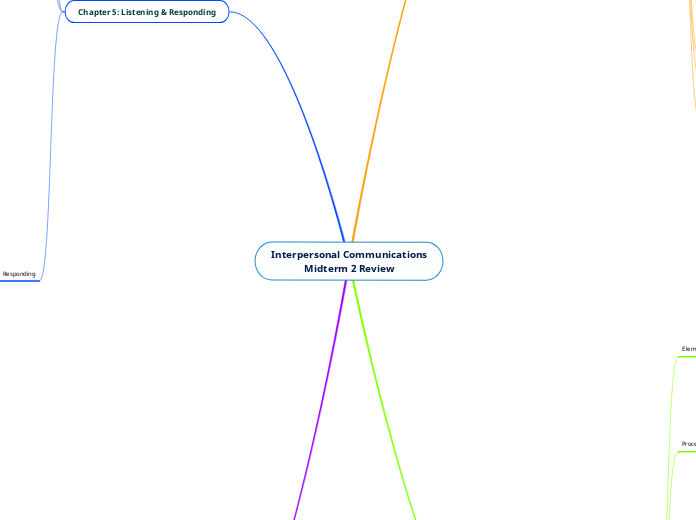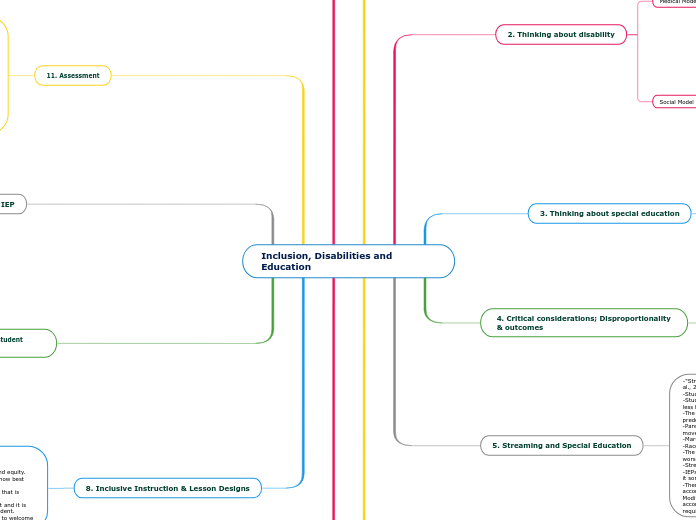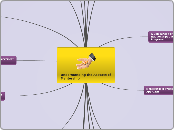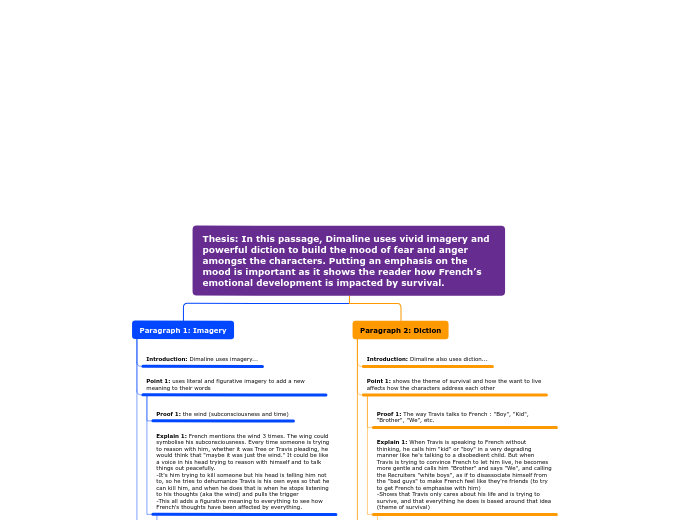Interpersonal Communications
Midterm 2 Review
Chapter 6: Power of Words
Power to Influence (TAP)
Perceptions
Actions
Thoughts
Triangle of Meaning
Symbol
ie. picture of a cat
ie. word "CAT"
Thought
ie. cat
words have 2 meanings
Connotative
ie. personal meaning "school" - i love school
Denotative
ie. literal meaning "school" - somewhere you go to learn
Consequence of bad verbal comm?
Misunderstanding
How to avoid
be aware in changes in meaning
be sensitive to peoples differences
specific and avoid over-generalizations
be clear/precise in the words we choose
aware of missed message
hurt feelings
person creates distance (end of the relationship
Chapter 5: Listening & Responding
Types
Disconfirming
incongruous
Incoherent
Impersonal
Impervious
interrupting
Irrelevant
Confirming
Compliment
Clarifying
Express positive feelings
Supporting
Agreeing with a judgement
Direct Aknowledgement
responding skills
paraphrase
Words
Good response
descriptive not evaluative
avoid unnecessary details
Provides useful information
Well timed
Listening
Barriers
listening for a goal/to get at something
Listener apprehension
external noise
Brain faster than how fast someone can talk
Criticizing the speaker
Unchecked emotions
Information overload
Self-absorbed
Skills
summarizing
reflecting (quick mental note)
ask questions
Critical listening
focus
Stop, look, listen
Empathy
Styles
Task-oriented
Critical
Analytical
Relational
Responding
Remembering
Understanding
Attending
Selecting
Hearing
Chapter 8: Conflict
(Interpersonal conflict)
Strategies
Collaboration
win - win
Accommodation
lose win
Compromise
win/ose - lose/win
Competition
win-lose
Avoidance
Lose - lose
Managing (4)
Problem
Goals
Information
Emotions
3 types
Ego
Simple
Pseudo
Triggers
Tension
Stress & lack of sleep & hungry
Perceived lack of fairness
"The big 6"
distance
intimacy
distrust
personal flaws
Social Issues (ie religion politics)
Power
Coercive
Reward
Expert
Referent
Legitimate
different perspectives
Feeling entitled
Criticism
Process
Aftermath
End
Middle
Beginning
Source
Elements
Incompatible goals, scarce resources, and interference
achieve a goal
two people - what you do affects the other person
an expressed struggle
Chapter 7: Non-verbal
CODES
vocal cues
silence speaks volumes
intonation
rate of speech
territory
towel on chair
appearance
sends a message (do I care)
personal space
public
social
personal
intimate
touch
depends on culture
to express intimacy
appropriate
high five, kiss on the lips
permission/how close to the coworker
facial expressions
(Paul Ekman)
Disgust
Sadness
Fear
Anger
Surprise
Happiness
Eye contact
expressive
cry
regulatory cues
interest
monitor
response
cognitive
first thoughts
Body movement & posture (kensics)
Adaptor
fanning yourself
Regulators
raise hand
Affect Display
shrugged shoulders
Illustrators
slams fist on desk
emblems/gestures
thumbs up
importance
manage interpersonal relationships
respond to others approprietly
get a lot of information from non-verbal
if contradiction exists
when a difference exists btw what someone says and what their actions are - we tend to believe the non-verbal
shows true feelings
method of communicating without words
supports the message - message and the non-verbal work together to create meaning









